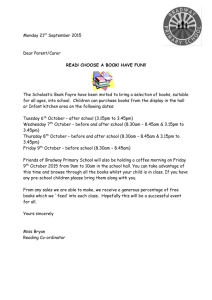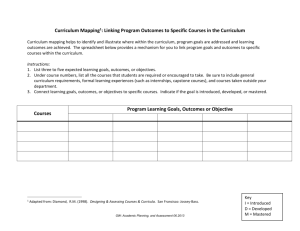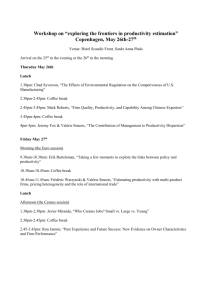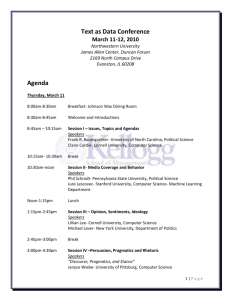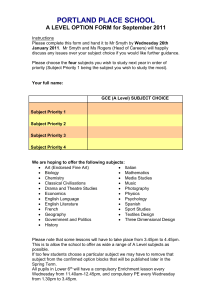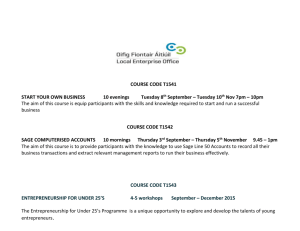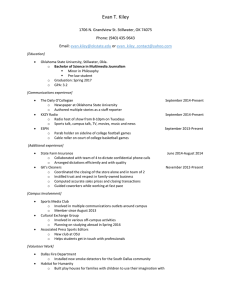Teaching and Learning In
advertisement
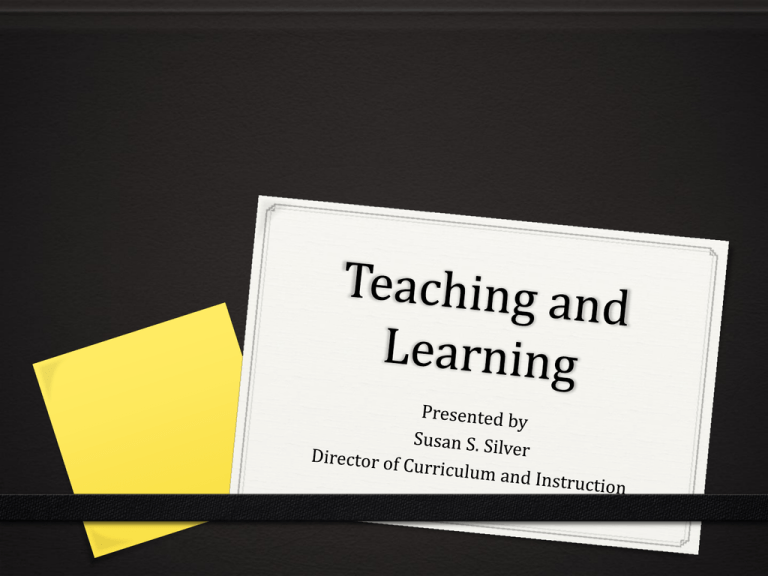
Agenda 8:00-8:45AM – Meet & Greet and Class Introduction 8:45-9:45AM – The Standards Movement 9:45-10:00AM – Break 10:00-11:30AM – Setting High Expectations for Learning 11:30-12:30PM – Lunch 12:30-1:45PM – Critical Thinking 1:45-2:00PM – Break 2:00-2:45PM Critical Thinking 2:45-3:00PM – Questions and Feedback Meet & Greet 1. What is your name? 2. What grade/subject do you teach? 3. What is an educated person? If education is focused on helping a student become some kind of person, what kind of person do we want him/her to become? Goals 1. Participants will be able to critically examine the historical events that have lead up to the formation of national standards. 2. Participants will analyze the correlation between the curriculum and the delivery of the curriculum. 3. Participants will be able to use two questioning strategies to promote high academic expectations for their students. 4. Participants will learn multiple strategies to promote critical thinking in their classroom. The history of the “standard.” Reading of Ravitch (2010) chapter: Hijacked! How the Standards Movement Turned into the Testing Movement Assignment 0 Intro: pp. 15-17 – All 0 Clinton Admin. pp. 17-19 – Team Rudolph 0 Goals 2000 pp. 19-21 – Team Rudolph 0 Obama Admin. pp. 21-22 – Team G-Men 0 A Nation at Risk pp. 22-25 – Team G-Men 0 A Nation at Risk 2 pp. 25-28 – Team Frosty 0 ANAR/NCLB pp. 28-30 - Team Frosty Key Points from Introduction *Tests should follow curriculum. They should be based on the curriculum. *The well educated person has a well-furnished mind, shaped by reading and thinking about history, science, literature, the arts, and politics. Key Points *The well-educated person has learned how to explain ideas and listen respectfully to others. Teaching and Learning Setting High Academic Expectations Right is Right Technique Set and defend standard of correctness in your classroom. How do the Capulets and Montagues get along? Partially Right Student replies, “They don’t like each other.” Teacher replies, “Right, they don’t like each other , and they have been feuding for generations.” -The teacher is doing the cognitive work that the student could do themselves. Questions You Might Ask 1. “So, is this a recent thing? A temporary thing? Who can build on Kiley’s answer?” 2. “Kiley, you said the Capulets and the Montegues didn’t get along. Does that really capture their relationship? Does it sound like what they’d say about each other?” Four categories Hold out for all the way. 1. I like what you’ve done. Can you get us the rest of the way? 2. We’re almost there. Can you find the last piece? 3. Can you develop that further? 4. Okay, but, there’s a bit more to it than that. Answer the question Students who may not know the answer may answer a different question. Right Answer, right time Use technical vocabulary View a Clip Right is Right Stretch It Technique The sequence of learning does not end with a right answer; reward right answers with follow-up questions that extend knowledge and test for reliability. This technique is especially important for differentiating instruction. Ask how or why: Can they explain how they got their answer? Ask for another way to answer: When a student solves it one way, it’s a great opportunity to make sure they can use all available methods. Ask for a better word: Offer opportunities to use more specific words, as well as new words with which they are gaining familiarity. Ask for evidence: Ask student to build and defend their conclusions and support opinions from among multiple possible answers. Ask students to integrate a related skill: Ask students to integrate the skill with others recently mastered. Ask students to apply the same skill in a new setting: Once students have mastered a skill, ask them to apply it in a new or more challenging setting. View a Clip Right is Right and Stretch It Establishing a Culture of Thinking “Critical thinking must, therefore, command a place in any institution committed to the pursuit of education because critical thinking is a necessary condition of it.” -J.E. McPeck Introduction What is a classroom culture that nurtures thinking? Strategies to Cultivate Thinking Strategies I Use Strategies I Will Use Discussion Questions 1. How do you currently support a thinking culture in your classroom? 2. What are some ways to enhance the thinking culture in your classroom? 3. What metaphor would characterize a thinking classroom? Evaluate the level of thinking in your classroom by using Figure 7.2 “Elements of Classroom Culture that Nurtures Thinking.” Importance of Critical Thinking 1. What do you think is the most compelling reason for students to be taught critical thinking? 2. What is the most important reason to include critical thinking skills in your curriculum? 3. What are the consequences of not teaching critical thinking? 4. Describe an example when a lack of critical thinking had a negative impact on your life. Rate your own level of critical thinking and the average level of the students in your class using Figure 1.3 Characteristics of Strong Critical Thinkers. What have your learned? 1. List three things you learned from today’s workshop. 2. List three things you want to learn more about in relation to today’s topics. 3. Today’s workshop was meaningful and informative. (Circle the one that applies) Strongly Disagree Disagree Agree Strongly Agree Thank you and have a relaxing and safe holiday break!

